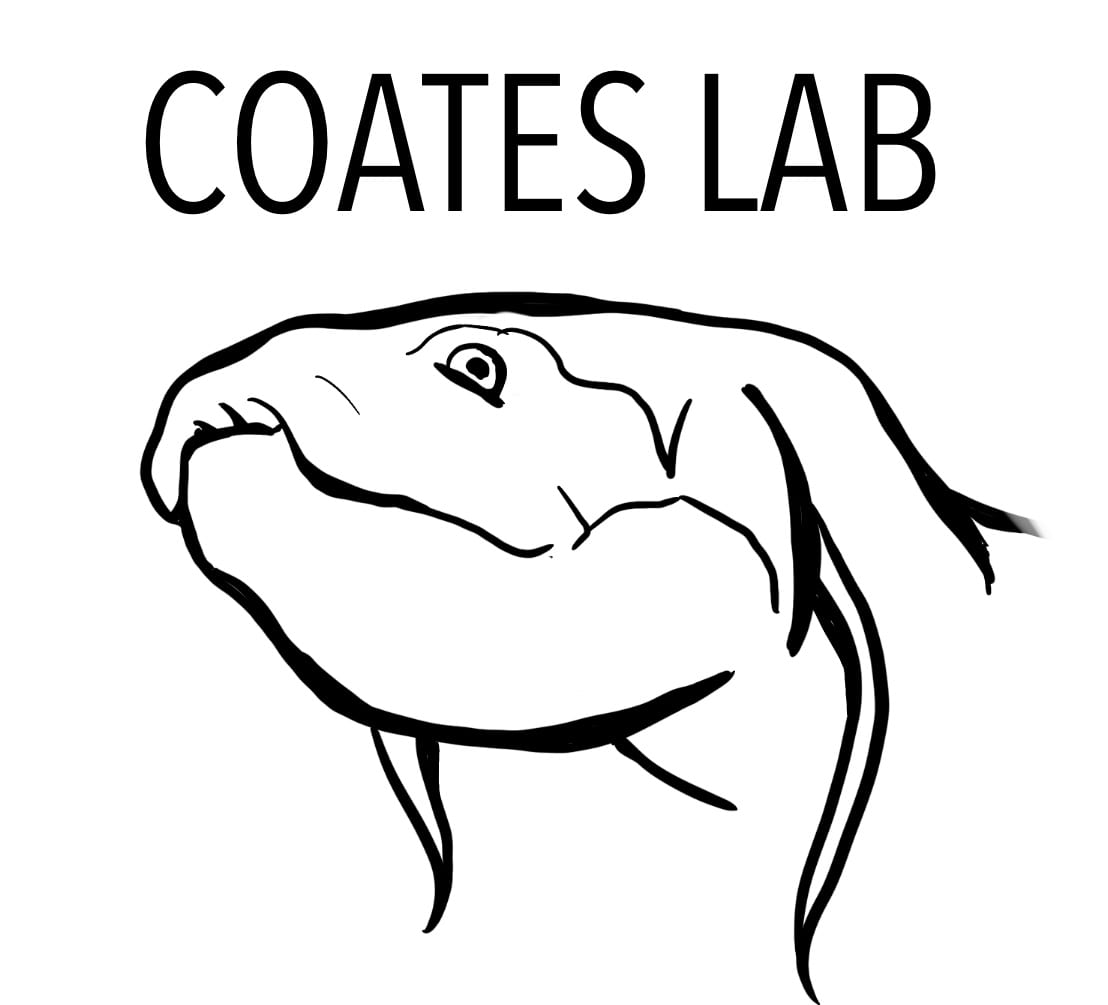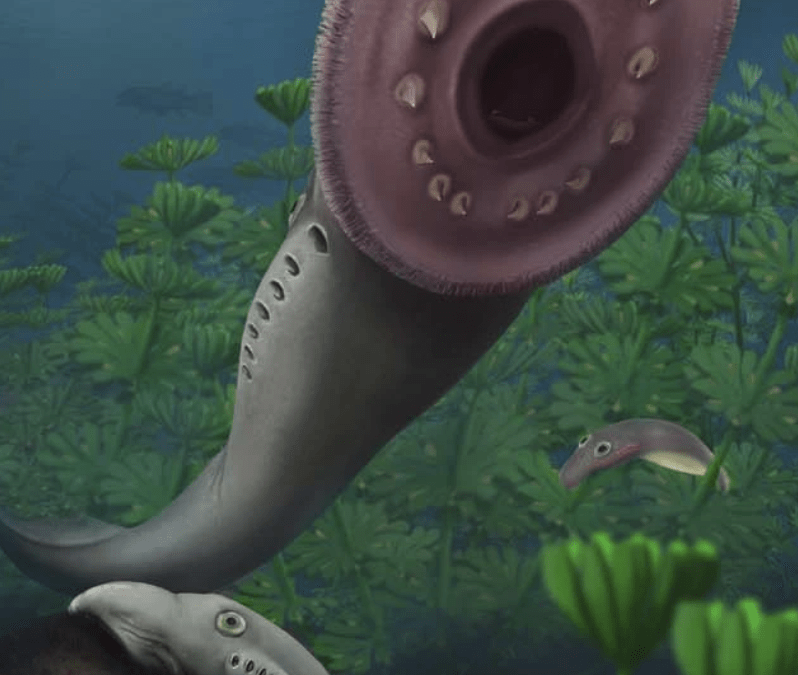Our new paper “Non-ammocoete larvae of Palaeozoic stem lampreys” is now out! Contributions were made from lead author/former postdoc/hagfish-in-training Tetsuto Miyashita, the dearly departed (to Kansas) Kristen Tietjen, and Mike Coates, the usual suspect involved. Essentially, they found that in a growth series of various fossil lamprey, the juveniles more or less resembled the adults, suggesting that the ammocoete stage is something unique to lampreys today.
Paper link: https://www.nature.com/articles/s41586-021-03305-9
Abstract: Ammocoetes—the filter-feeding larvae of modern lampreys—have long influenced hypotheses of vertebrate ancestry1,2,3,4,5,6,7. The life history of modern lampreys, which develop from a superficially amphioxus-like ammocoete to a specialized predatory adult, appears to recapitulate widely accepted scenarios of vertebrate origin. However, no direct evidence has validated the evolutionary antiquity of ammocoetes, and their status as models of primitive vertebrate anatomy is uncertain. Here we report larval and juvenile forms of four stem lampreys from the Palaeozoic era (Hardistiella, Mayomyzon, Pipiscius, and Priscomyzon), including a hatchling-to-adult growth series of the genus Priscomyzon from Late Devonian Gondwana. Larvae of all four genera lack the defining traits of ammocoetes. They instead display features that are otherwise unique to adult modern lampreys, including prominent eyes, a cusped feeding apparatus, and posteriorly united branchial baskets. Notably, phylogenetic analyses find that these non-ammocoete larvae occur in at least three independent lineages of stem lamprey. This distribution strongly implies that ammocoetes are specializations of modern-lamprey life history rather than relics of vertebrate ancestry. These phylogenetic insights also suggest that the last common ancestor of hagfishes and lampreys was a macrophagous predator that did not have a filter-feeding larval phase. Thus, the armoured ‘ostracoderms’ that populate the cyclostome and gnathostome stems might serve as better proxies than living cyclostomes for the last common ancestor of all living vertebrates.

